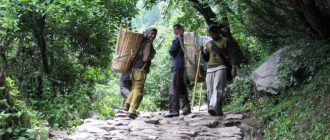Nepal has experienced many earthquake disasters over the years. The following article gives an overview to the catastrophic impact that these events can have on the lives of those living in Nepal.
Unfortunately for its citizens, Nepal is often victim to natural disasters such as landslides and earthquakes. In fact, Nepal was originally formed following a huge earthquake over 60 million years ago involving the Eurasian plate and the Indo-Australian plates. This earthquake was of such immense power that it resulted in the high peaks which now characterise Nepal – the Himalayas.
The last major earthquake to hit Nepal was in 1934, when almost 20,000 people were killed. It is estimated, that over 17,000 of these fatalities occurred within the first minute of the earthquake. Additionally, over 25% of residential homes in Nepal were lost and a number of great landmarks and national treasures were destroyed.
Despite the terrible loss of lives, property and infrastructure during this great earthquake in Nepal, it seems that little learning has taken place and that Nepal would be unlikely to successfully withstand another great earthquake.
In Nepal, as in many other countries, it is not usually the earthquake itself which results in the high number of casualties but instead, the poor reinforcement of buildings in Nepal. Consequently, most people are killed when their homes collapse on them during the earthquake.
Adding to the high fatality figures in Nepal is the inaccessibility of some villages and hence the difficulty that emergency services may have reaching and rescuing people.
Experts are today warning that Nepal is well overdue for another major earthquake. The same experts have suggested that Nepal would in likelihood have a greater loss of life in the next earthquake than was experienced in the earthquake in 1934.
In addition to the issues mentioned above, it is also notable that Kathmandu (the capital city of Nepal) has only two main roads routed towards medical facilities and only one runway. Consequently, any disruption, damage or blockage of these roads could easily have devastating consequences. Other issues identified are that the people of Nepal have not been educated in respect to earthquakes, buildings have often been put up in great quantity without regulations (and without consideration of the importance of earthquake building prevention in the building plans) and finally that the population of Nepal has increased significantly. Kathmandu continues to increase by 6.5% every year.
A massive and significant earthquake prevention programme is needed to be strictly reinforced and adhered to if lives are to be saved.





